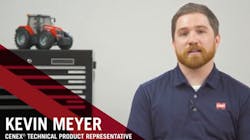There’s no such thing as a good time for downtime, especially when it’s unexpected. And one issue many fleet drivers don’t plan for is forced regens. Luckily, there’s ways to reduce or avoid them from occurring.
QUESTION: What is a forced regen?
ANSWER: Diesel particulate filters (DPF) can be found on medium and heavy-duty fleet trucks and are designed to reduce emissions by capturing soot before it enters the environment. Through regeneration, the soot on the filter is burned away using elevated temperatures generated through equipment operation. There are a few different types of regens, with a forced regen being the last resort to clean soot from the DPF.
A forced regen can occur when enough soot builds up on the diesel particulate filter to a point where the vehicle may be no longer operable. When the soot build up on the DPF exceeds a certain threshold, a forced regen is needed to remove the soot from the DPF to keep equipment running smoothly.
QUESTION: What happens during a regen?
ANSWER: When enough soot accumulates on the DPF, a regen is needed to clean the filter. A regen uses high temperatures to burn the soot and remove it completely from the DPF. A regen can happen a few different ways, with the forced regen being the last available option.
- Passive regeneration occurs when temperatures during equipment operation are hot enough to burn the soot without any changes needed.
- Active regeneration occurs when temperatures during operation do not meet a minimum threshold. With active regens, the equipment will modify how it performs to increase the temperature so it can meet the minimum temperature requirement.
- If a passive or active regen cannot be performed, a forced regen must occur to keep the equipment operational. Forced regens will require the fleet equipment to be parked while the soot is burned off of the DPF, leading to unexpected downtime.
QUESTION: How can I reduce forced regens?
ANSWER: Forced regens don’t have to be a recurring problem. Using a premium diesel fuel, like CENEX Roadmaster XL can reduce the need for DPF regeneration. With a robust additive package, Cenex Roadmaster XL provides a cleaner, more complete burn, which minimizes soot during combustion and leads to a cleaner DPF. Using a premium diesel fuel designed to meet the demands of today’s engines can reduce the amount of soot that accumulates on the DPF, leading to a decreased number of regens.
To find your local Cenex dealer or learn more tips to optimize your operation, visit cenex.com.
